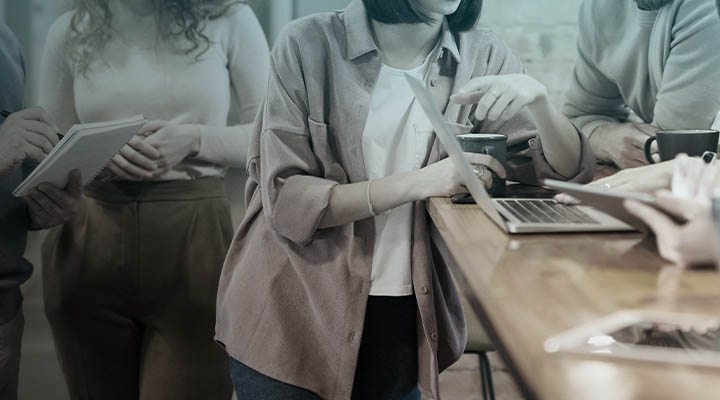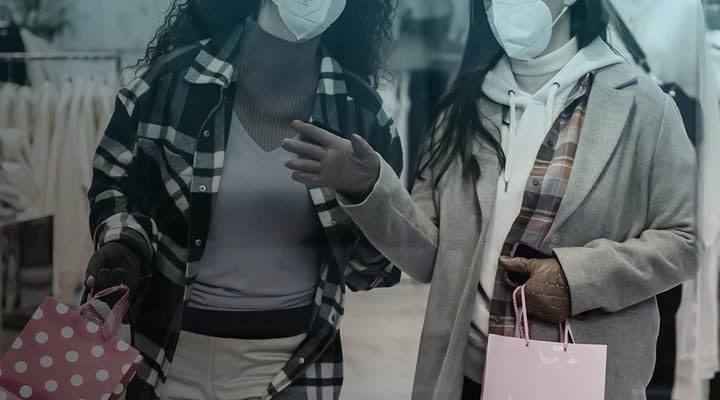Towards the end of each calendar year, many retail consultants, including yours truly, spend their time envisaging what the next 12 months has in-store for the industry and what retailers should focus on for success. Whether that’s changes to customer behaviour, in-store experience or last mile delivery, you name it, we’ve tried to predict it.
December 2019 was no different. Retail enthusiasts across the globe dusted off their crystal balls and made their predictions for the year ahead. Unfortunately, less than three months later, just about every retailer in the world had had their years tipped upside down. And with it went our predictions… or did they?
We’re now seeing new predictions arise about the ‘new norm’ post-Covid-19 and what the industry will look like. Well instead of starting from scratch, surely some of the predictions we made at the beginning of the year still have some significance? I agree we’ll see changes, however long-lasting they may be, but there must be some remaining wisdom from all those soothsayers out there.
So I’ve dug into the archives of those 2020 predictions and picked the most common four trends I’ve seen from across the board. In this article, I’ll break down the impact Covid-19 has had on each of them and assess their value in a post-Coronavirus world.
Experimental Stores Will Serve As A Destination For Customers
The stage was set on Oxford Street, London. Adidas’ new flagship store was wall-to-wall excitement, from interactive mirrors to LED screens and a Running Lab, you weren’t going there just to shop. Meanwhile, further down the road Body Shop rolled back the years with its new sustainable store paying homage to its activist roots. Customers were being encouraged to interact in-store, spend time in there, and if you happened to make a purchase, even better.
The same can be said over the Atlantic in New York where the biggest private real-estate development in U.S. history and a cool $25 billion introduced us to Hudson Yards. Known as an ‘urban retail centre’ by its developers, it is home to luxury brands such as Louis Vuitton and Cartier, whilst also offering Camp (to entertain the kids) and Little Spain (for your lunchtime trip to the Mediterranean, and some of the best paella I’ve tasted).
But this just won’t work, at least for now. Even when customers return to physical stores, you can expect dwell times to plummet. Customers will want ease, convenience and, above all, safety. We’ve already seen the grocers unsurprisingly lead the way in this space, given they’re one of the few physical retailers still allowed to be open. We’re seeing one-way shopping technology introduced by Aldi and a chatbot from Lidl to allow you to check busy times in-store. This is the future of physical retail for some time to come.
Verdict: It will still be an experience that customers are looking for, but a safe and clean one.
Omnichannel, Omnichannel, Omnichannel
This is a retail buzzword but cannot be ignored. Heading into 2020, the tide was already turning towards e-Commerce, but recent events have caused a seismic shift. E-Commerce in the UK is now expected to be worth almost £200 billion in 2020, that’s an astounding 11% growth from last year.
Now also remember the Gen-Z population is gaining market share daily, already making up 40% of all consumers as of this year. This leads me to believe that this group of young consumers’ purchasing habits combined with an already huge move to e-comm will produce a defining moment in omnichannel retail, with the scales permanently tipped towards digital channels.
I also expect the growth of social commerce to be more than substantial following the pandemic. It has already been reported that the time spent on Instagram is estimated to grow by 14% this year. This equates to around 3 minutes per user per day, which may not sound like it, but is massive growth. Let’s take Joe Wicks as an example. Now dubbed the nation’s PE teacher, he hit a peak (and world record) number of 955,158 viewers on his live stream workouts. This has resulted in him becoming the subject of a £5million bidding war between Nike and Adidas to be their new UK ambassador. If that’s not a sign of things to come in the social commerce space, with two of the world’s biggest retailers fighting over a YouTube star, then I don’t know what is.
Verdict: This buzzword isn’t going anywhere, but it’s social shopping that needs your attention.
AI And Personalisation Are The Keys To Sustained Success
With physical retailers officially on notice from the Government to begin re-opening from June onwards, companies are no doubt working hard to understand the ‘Covid Secure’ certification and ramifications for their stores. For example, John Lewis is looking at its re-opening strategy and has already highlighted concerns around dressing rooms. Clothes might have to be placed into temporary quarantine if tried on but not purchased. Now how feasible and sustainable is that business process?
For that reason, physical shopping just won’t be the experience it once was and customers will continue their uptake in online retailers, that we’ve already seen during the lockdown. Therefore, AI and Personalisation will continue to play an increasingly prominent role in retail - how can you provide the personalisation of an in-store experience in the comfort of a customer’s home? ASOS’ Fit Assistant has been around for a few years, but I expect to see all online retailers to soon have a similar tool at their disposal.
Don’t forget that with the uptake in fashion e-Commerce, comes with it more and more returns. Now if they were a headache for retailers before, they’re at least a migraine in the post-Covid-19 world. Retailers need to leverage AI to understand how better to manage their returns, re-integrate them back into their supply chain where possible, and fundamentally remain profitable.
Verdict: Bigger than ever, retailers need to understand and meet evolved needs and wants.
Innovation Is The Name Of The Game
The shift to digital during this pandemic has been undoubtable and, for both consumers and retailers, unavoidable. However, in my opinion, what this fundamentally means is that this shift away from physical commerce has been vastly accelerated. What might have taken two to three years, will be complete in less than six months. With footfall predicted to remain at sub-par levels for at least the remainder of 2020, retailers now need to bring the convenience and enjoyment of physical shopping, into someone’s front room.
Innovation isn’t a new trend and has featured on many an expert’s annual predictions, but its importance has skyrocketed. Innovation should be looked at a differentiator for both your own offerings to consumers and your position in the market. I’ve really enjoyed retailers innovating to offer new products and services to their customers, whilst developing new revenue streams. Look at Patty & Bun and their partnership with the London butcher HG Walter to bring DIY burger kits to its customers. Seeing these new online retailers offering simple but effective online user journeys brings a lifeline to online survival. Retailers need to leverage third parties such as Shopify to produce smooth online experiences and meet customer expectations.
Alongside the increase of Augmented and Virtual Reality (A/VR) apps I expect to see, the role of the store is going to be an exciting forefront of innovation. Whilst retailers will inevitably be looking at the fulfilment opportunities or services that stores can offer, the innovation of the space itself and the technology in-play will be intriguing. Airports are a great example of similar spaces that will need to adapt and meet new hygiene and safety requirements. Leaders in this space have highlighted that an accelerated transition to ‘touchless technology’ will be required with more prominent roles for mobile phones too. I’d expect to see similar innovations in the physical retail space too.
Verdict: This isn’t going anywhere, if you don’t, someone else will.
There’s no debating the impact of Covid-19 but what I hope this article confirms is that retailers don’t need to wipe the slate clean. Pivot yes, renew yes, but don’t throw the baby out with the bathwater. Renewal does not mean re-creation. I truly believe that some kind of normality will be restored before the end of the year, and it will be those retailers who built on their existing strategies and roadmaps that succeed.
Just like these predictions, they don’t need to be scrapped, just renewed.
Published
April 29, 2024Reading time
5 minutesRelated posts





